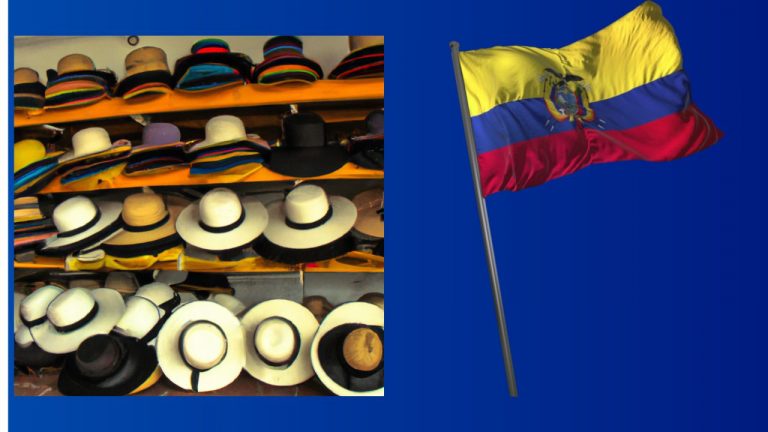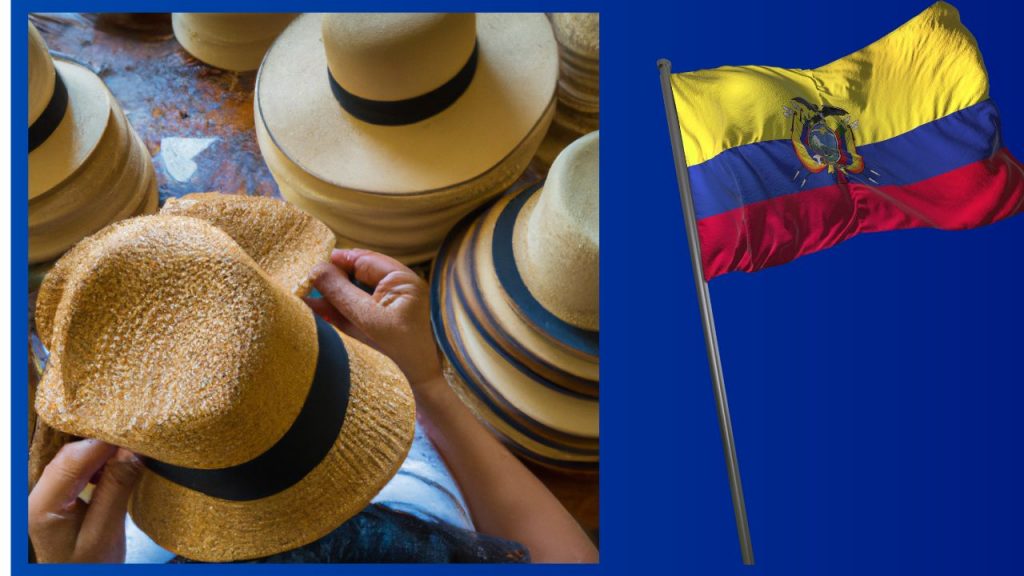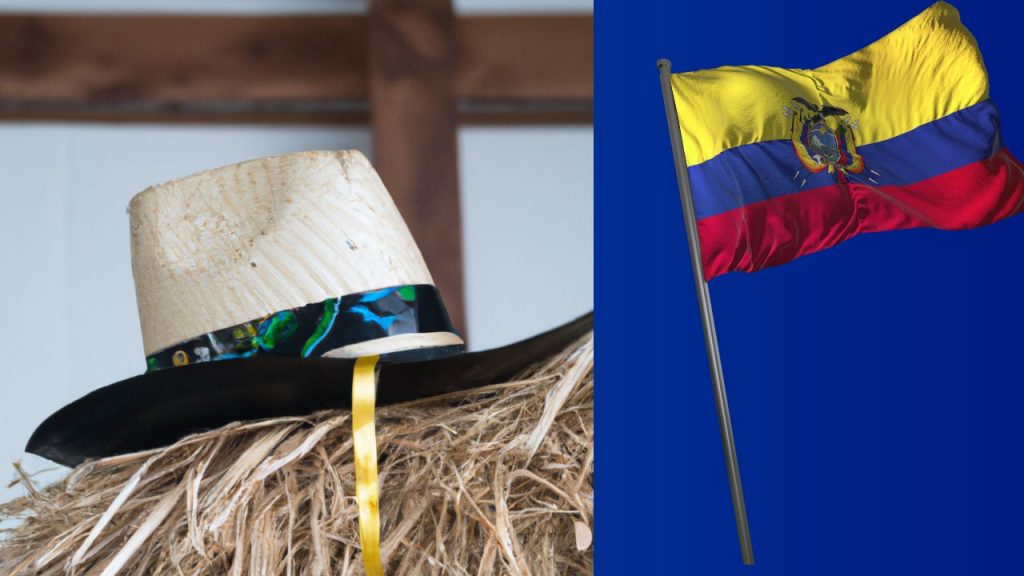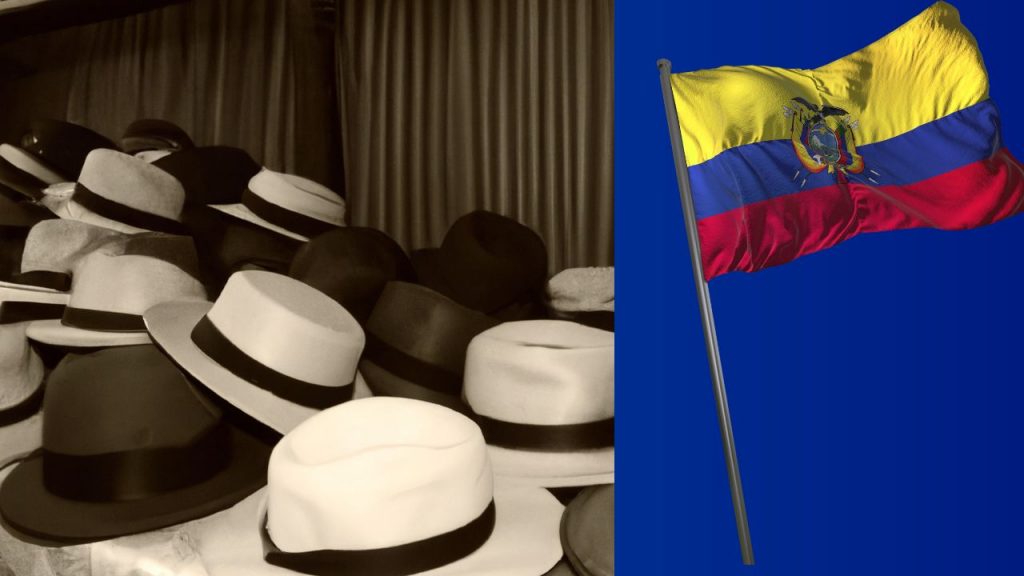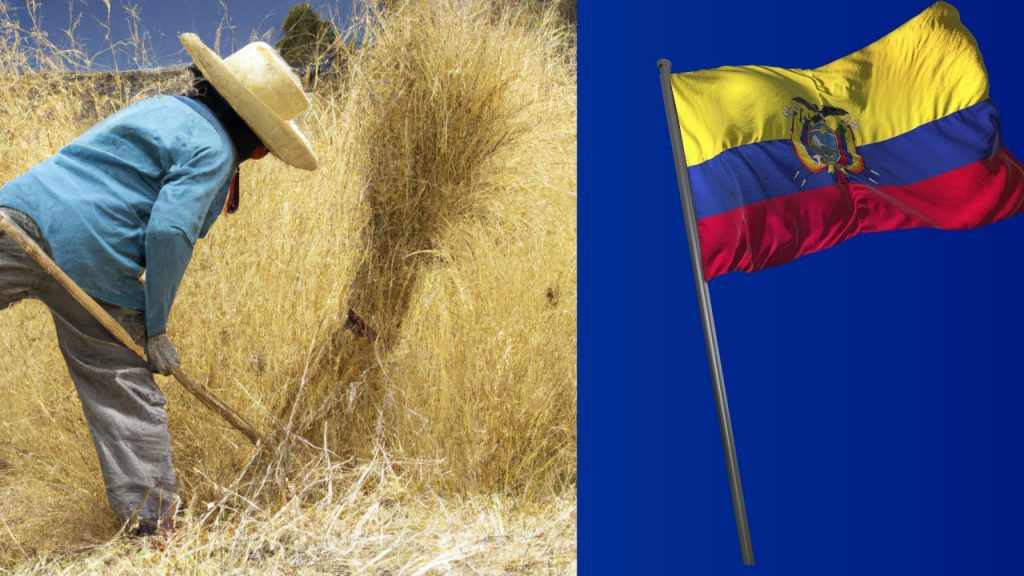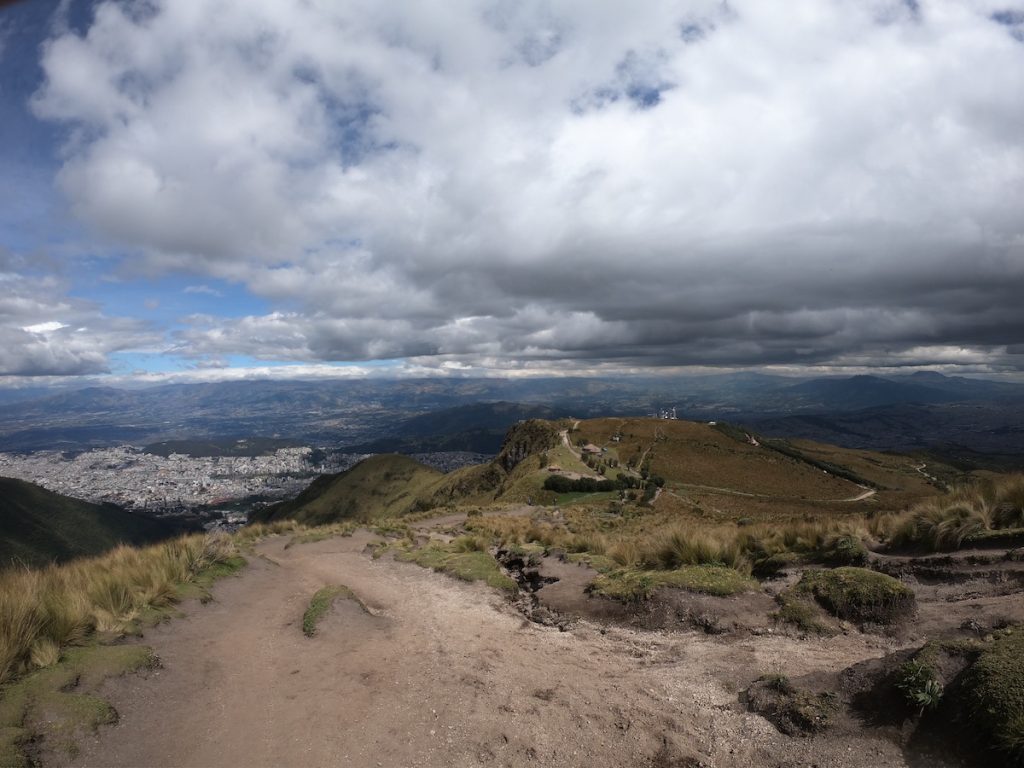Montecristi hats are indeed a special find, and visiting Montecristi itself was an unforgettable experience for us. Located just 15 km north of Manta, the town is easily accessible by car or bus. Known for its traditional crafts like weaving and pottery, Montecristi’s heritage shines through its Panama hats—also called Montecristi hats.
Each Panama hat is meticulously hand-woven from the fibers of the toquilla palm, showcasing exceptional quality and craftsmanship. These hats are globally revered and often dubbed the “Rolls-Royce” of straw hats for a reason. The weaving process is complex and can take artisans several months to complete, making each hat a true labor of love.
We saw how integral this craft is to the locals’ lives and economy—most residents are involved in some part of the hat-making process. Bringing home a couple of these hats was like bringing back a piece of Montecristi’s soul. They aren’t just souvenirs for us; they’re fine fashion pieces that carry the essence of our Ecuador adventure.
Looking back, buying a genuine Montecristi hat required local knowledge – from understanding craftsmanship to knowing fair prices. Skip the uncertainty I faced and get a FREE personalized Ecuador trip quote from my trusted local experts who know exactly where to find authentic artisanal products. Your booking helps support both this blog and local Ecuadorian communities.
Plan perfect trip to Ecuador & Galapagos
I spent countless hours researching everything about traveling to Ecuador, and I created this blog for fellow travel enthusiasts who want the best, most reliable information. But if you want to save time, we’ve partnered with the top local agency to plan your dream trip.
What Makes Montecristi Ecuadorian Hats Unique?
Montecristi hats are truly remarkable, and we could feel the dedication and precision behind each piece. The material—toquilla straw—is harvested from the Carludovica palmata plant, known for its unique strength and flexibility. This straw isn’t just chosen randomly; hatmakers meticulously select and process it, ensuring only the finest quality fibers go into each hat.
What stood out most for us was the level of craftsmanship that defines these hats. Every Montecristi hat is handmade, with artisans devoting weeks or even months to complete a single piece. Watching this process, we saw the intricate techniques—braiding, weaving, and blocking—that combine to make a hat both durable and beautifully designed.
The versatility of Montecristi hats also adds to their appeal. They’re incredibly stylish and can be tailored to fit any personality or occasion. Whether you’re a celebrity, a politician, or simply someone who appreciates timeless fashion, these hats make a bold yet elegant statement. Our hats have become treasured items, not only as souvenirs but also as pieces we look forward to wearing time and again.
Where Can You Buy Panama Hats Outside Ecuador
While authentic and quality Panama Hats can be found in Montecristi, Ecuador, you can still get one without going to the country. Here are some of the top Panama Hats we have found online.
ULTRAFINO Authentic Aficionado Straw Panama Outback Safari Hat
This safari-inspired fedora is a classic Panama hat with a refined touch. The hand-blocked teardrop crown adds a timeless look, and the wide, non-adjustable brim, secured at the front and back with a built-in wire, holds its shape well. It has a comfortable twill sweatband and a rugged braided rope band that brings a bit of that adventurous spirit.
The craftsmanship is impressive, especially with its Ultrafino quality, which means a minimum of 600 weaves per square inch. Hats in this category often take about six months to make—truly a work of art! The tight weaving stands out, though perhaps not as intricate as the Montecristi piece I bought, it still has that same elegance.
One of the best parts? The fit is just right. It’s snug and comfortable without needing any extra foam strips, which is rare with other hats. It’s easily become one of my favorites, and if you’re curious, you can check its current price on Amazon.
Brixton Men’s Messer Medium Brim Felt Fedora Hat
The Brixton Messer fedora brings a stylish, versatile touch to both casual and formal looks with its soft, flat 8 cm (2.5-inch) brim and sleek faux leather band, complete with a subtle debossed logo. Crafted from wool felt, this hat easily adds sophistication to any outfit.
While the craftsmanship is impressive, I found the band feels more like rubber or plastic than faux leather, which could be a bit disappointing if you’re expecting something with more texture. Additionally, mine arrived without a protective case and had a slight deformation, likely from shipping.
Despite these small drawbacks, I’d say it’s worth the price for the quality and style. The size does run a little small, but it still frames an outfit nicely, adding that extra bit of polish.
Tumia – Fedora Panama Hat
Tumia is a well-regarded Panama hat brand in the UK, bringing a touch of Ecuadorian craftsmanship to their lineup. Each Tumia hat is meticulously handwoven in Ecuador using multiple fine “iraca” palm fibers, which makes them incredibly lightweight and breathable. They’re then finished in Bristol, England, blending traditional Ecuadorian techniques with a British touch.
The craftsmanship is impressive, but if you’re familiar with authentic Ecuadorian Panama hats, you might notice some subtle differences. These hats, especially the classic Fedora style, are versatile and fit most head shapes comfortably, making them suitable for both formal and casual occasions. For a Panama hat with an Ecuadorian-British flair, Tumia offers a great option.
Still, it is worth purchasing if you are looking for Panama hat alternatives that will not empty your wallet (check the current price here).
Why Montecristi Ecuadorian Hats are Expensive?
Montecristi hats are crafted with an exceptional level of care and precision. Made from the finest toquilla straw, these hats undergo a meticulous selection and processing journey to guarantee their quality. Every part of the hatmaking process is done by hand, with skilled artisans devoting weeks—or even months—to perfect each hat. Techniques like braiding, weaving, and blocking transform raw materials into pieces that are both durable and visually stunning.
Montecristi hats are treasured not only for their craftsmanship but also for their adaptability and style. They seamlessly transition across various settings and can be tailored to suit individual tastes, making them a sought-after accessory for many, from style enthusiasts to those who value tradition. These hats have become a symbol of Ecuadorian artistry and heritage, celebrated worldwide for their unique blend of functionality and elegance.
History of Montecristi hats
Have questions about your upcoming Galapagos trip? Join my Galapagos Reddit community and ask other travelers who recently visited the islands. Get up-to-date tips, real experiences, and honest advice from other travelers (I ban tour agencies and resellers).
The hat industry in Montecristi has roots reaching back to the 19th century, making it one of the town’s oldest traditions. Located in Manabí, Ecuador, Montecristi is known for its warm, humid climate and its abundant toquilla straw—the essential material for crafting the famous hats. According to local legend, Montecristi’s hat industry began when skilled hatmakers from Cuenca came to the town in search of a new source of toquilla straw. They soon discovered that the Carludovica palmata plant, thriving in Montecristi’s tropical environment, produced top-quality straw.
Initially, the artisans used techniques from Cuenca, but with time, they created their own distinctive methods that are still in practice today. These techniques, including intricate braiding, weaving, and blocking, have been passed down through generations, keeping the craft alive and unique to Montecristi. Even now, crafting a single hat can take several weeks or months of dedicated, hands-on work. Recently, there has been a renewed interest in preserving these traditional skills, and many young artisans are learning the craft from their elders, ensuring that Montecristi’s legacy of handwoven hats continues.
Materials Used to Make Montecristi Hats
The straw used in Montecristi hats, known as toquilla straw, comes from the Carludovica palmata plant. This straw’s flexibility and strength are essential for producing the high-quality hats Montecristi is famous for. The process of preparing toquilla straw is meticulous: first, artisans cut the leaves of the Carludovica palmata plant and peel away the outer layers to reveal the inner fibers. These fibers are then left to dry under the sun, after which they’re carefully sorted by quality and color.
To make the straw pliable for weaving, it’s soaked in water before being braided into long strands. These strands are then woven into the hat’s shape through intricate techniques like plaiting, twining, and knotting, each step demanding precision and skill. Beyond toquilla straw, hatmakers sometimes incorporate additional materials like ribbons, leather, beads, or other accents, enhancing the hat’s durability and aesthetic appeal.
Every material used in a Montecristi hat is chosen and processed with an eye for quality, making these hats both durable and uniquely characteristic of Ecuadorian craftsmanship.
The Craftsmanship of Montecristi hats
The craftsmanship of Montecristi hats is central to their unique charm and appeal. Every Montecristi hat is entirely handmade, often requiring weeks or even months to complete. The process begins with the delicate selection and preparation of toquilla straw, which, as I mentioned earlier, involves a meticulous series of steps to produce fine, workable fibers. Once prepared, the straw is braided into long strands by skilled artisans.
Braiding is a key technique, where the hatmakers create long strands and carefully weave them into the hat’s basic form. The artisans apply different braiding techniques to achieve intricate patterns and textures, adding depth and style. Decorations such as ribbons or beads might also be incorporated to add personalized or traditional embellishments.
Beyond braiding, hatmakers use weaving and knotting techniques to shape and build the structure of the hat. Once the basic structure is complete, the final touch is blocking—a process where the hat takes its ultimate form and gains the sturdy, classic look Montecristi hats are known for. Blocking provides the necessary shape and durability, ensuring that each hat is not only visually appealing but also functional.
The dedication to these traditional techniques, combined with attention to every fine detail, is what makes Montecristi hats truly stand out, embodying both Ecuadorian heritage and masterful craftsmanship.
How To Choose A Perfect Montecristi hat
Here are some tips for choosing the right size Montecristi hat:
- Measure your head: To find the right size hat, it’s important to measure your head using a flexible tape measure. Place the tape measure around your head, just above your ears and eyebrows. This will give you an accurate measurement of your head circumference.
- Check the size chart: Most Montecristi hatmakers provide a size chart on their website or in their store. The chart will give you an idea of what size hat to choose based on your head circumference.
- Try on different sizes: If you’re buying a Montecristi hat in person, try on different sizes to see which one fits best. The hat should fit snugly on your head, but it shouldn’t be too tight.
- Consider the style: Different styles of Montecristi hats may fit differently, so be sure to consider the style of hat you’re interested in when choosing a size.
- Customize for a perfect fit: If you’re unable to find a Montecristi hat in your size, many hatmakers offer customization options. You can ask them to make a hat to your specific measurements, which will ensure a perfect fit.
Trust me, while you can buy Panama hats anywhere, experiencing the craftsmanship firsthand in Montecristi makes all the difference! Want an expertly planned itinerary that combines shopping with cultural insights? Get a FREE quote from my recommended local agency. Your booking supports this blog and local Ecuadorian artisans.
After Care Instructions
Once you’ve chosen the right size Montecristi hat, here are some tips for caring for it:
- Store your hat properly: When you’re not wearing your Montecristi hat, store it in a dry, cool place. Avoid exposing it to direct sunlight or heat, as this can cause the straw to become brittle and dry out.
- Keep it clean: To clean your Montecristi hat, gently brush it with a soft, dry brush. If it becomes soiled, you can spot clean it using a mild detergent and a damp cloth. Avoid getting the hat too wet, as it may become misshapen.
- Protect it from the elements: If you’re going to be wearing your Montecristi hat in the rain, you can apply a waterproofing spray to help protect it. Avoid wearing the hat in extreme weather conditions, as this can cause it to become damaged.
- Repair any damage: If your Montecristi hat becomes damaged, you can take it to a hat repair specialist to have it fixed. This will help to preserve the integrity and longevity of the hat.
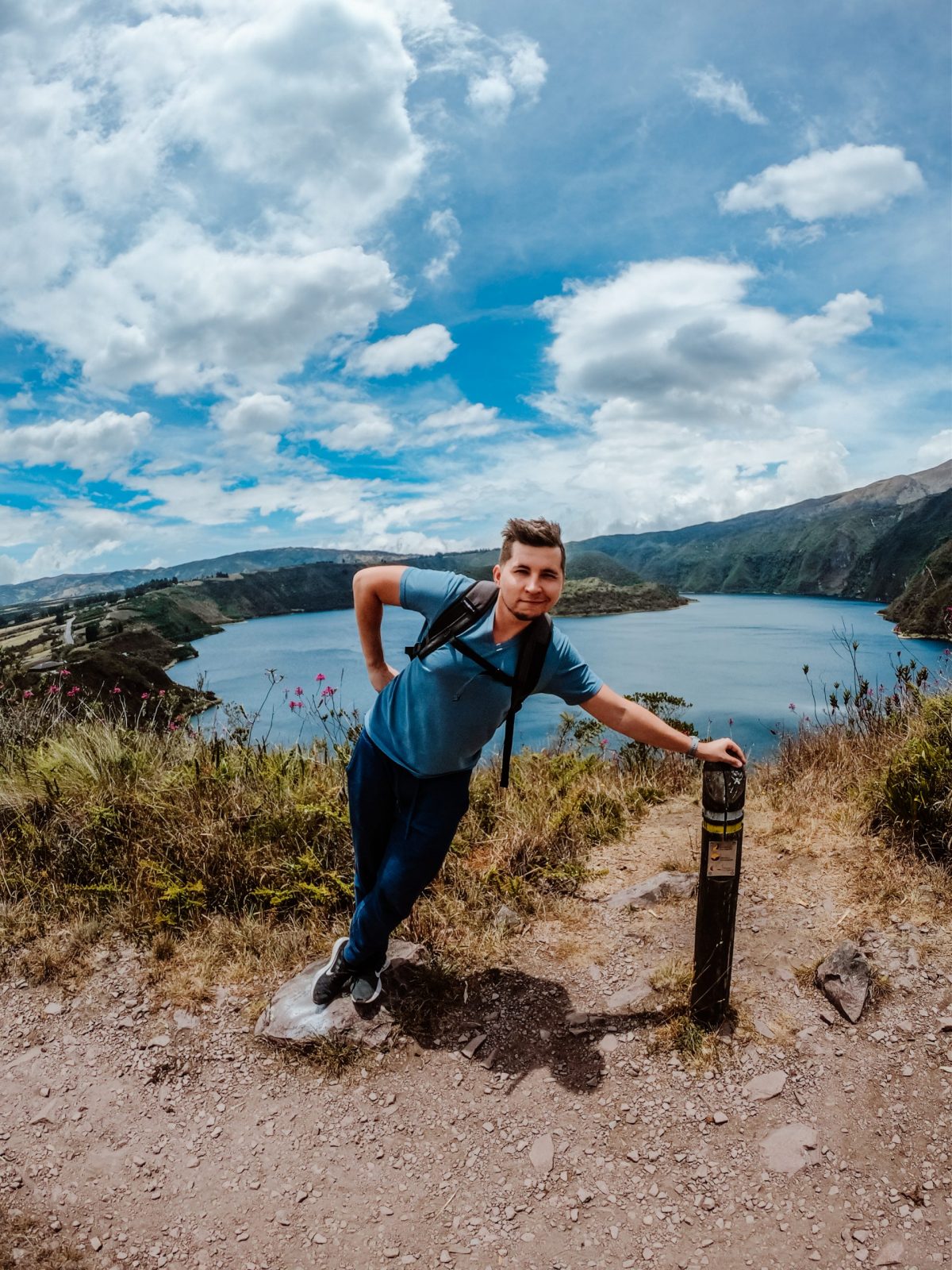
Planning trip to Ecuador?
My wife and I rented a car for 15 days and traveled from the northern part of Ecuador to the south, visiting amazing cities like Quito, Otavalo, Baños, Cuenca, and Guayaquil. Along the way, we explored iconic places such as Cotopaxi National Park, Quilotoa Lake, and many more breathtaking destinations.
Not many blogs cover traveling in Ecuador in detail, so I spent nearly three weeks creating this comprehensive Ecuador travel guide based on our trip. It’s packed with everything you need to know, and honestly, I consider it the best free travel guide about Ecuador out there.
If you’re planning a trip to Ecuador, don’t forget to use my link for discounted hotel prices through Booking.com. It’s a great way to support my blog while saving money on your accommodations!
Conclusion
Montecristi hats are versatile and stylish, making them suitable for various occasions, from casual outings to formal events. Their adaptability allows each hat to be customized to reflect personal tastes, whether through subtle bands or intricate detailing. This versatility, combined with exceptional quality, has made Montecristi hats favorites among a broad audience, including icons like Winston Churchill and Steve McQueen.
Their reputation has transformed these hats into an emblem of Ecuadorian craftsmanship, celebrated by celebrities, politicians, and everyday enthusiasts alike. With each hat being a product of meticulous artistry, Montecristi hats have transcended fashion trends, becoming timeless pieces that showcase Ecuador’s cultural heritage to the world.
Plan perfect trip to Ecuador & Galapagos
I spent countless hours researching everything about traveling to Ecuador, and I created this blog for fellow travel enthusiasts who want the best, most reliable information. But if you want to save time, we’ve partnered with the top local agency to plan your dream trip.

